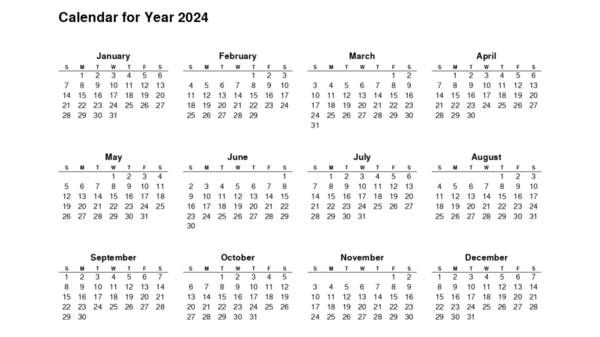The 12 Months of the Year
A year is divided into 12 months in the modern-dayGregorian calendar.The months are either 28, 29, 30, or 31 days long.


The Gregorian calendar is made up of 12 months, each between 28 and 31 days long.
Each month has either 28, 30, or 31 days during acommon year,which has 365 days. Duringleap years,which occur nearly every 4 years, we add an extra (intercalary) day,Leap Day,on 29 February, making leap years 366 days long.
This is to keep ourcurrent calendaraligned with thesolar yearandastronomical seasonsmarked byequinoxesandsolstices.
The 12 Months
TheGregorian calendarconsists of the following 12 months:
- January- 31 days
- February- 28 days in acommon yearand 29 days inleap years
- March- 31 days
- April- 30 days
- May- 31 days
- June- 30 days
- July- 31 days
- August- 31 days
- September- 30 days
- October- 31 days
- November- 30 days
- December- 31 days
Tracking the Moon’s Orbit
The months originated as a way to mark time and break up the year into shorter periods based on theMoon’s orbitaround Earth. The wordmonthis even derived from the wordMoon.
As far as we know, months were first used in Mesopotamia sometime between the years 500BCEand 400 BCE to measure the natural period related to thelunar month,or synodic month, which is the time it takes for the Moon to go through all theMoon phases.
How Many Have 28, 29, 30, or 31 Days?
The Gregorian calendar has 4 months that are 30 days long and 7 months that are 31 days long. February is the only month that is 28 days long in common years and 29 days long in leap years.
From 10 to 12 Months
Our currentGregorian calendarand its predecessor, theJulian calendar,both have 12 months. However, the month names we use today are derived from theRoman calendar,which initially had only 10 months, with the calendar year starting in March (Martius).
The Romans named some of the months after their position in the calendar year:Septembermeans the 7th month,Octoberthe 8th,Novemberthe 9th, andDecemberthe 10th month. However, whenJanuaryandFebruarywere eventually added and the beginning of the calendar year was moved to January, the position of these months no longer corresponded with the original meaning of their names. Today, we still call the 9th month of the year September, the 7th month.
TheIslamic calendar,theHebrew calendar,and theHindu calendaralso use months to divide up the year. Although the Gregorian calendar is the most commonly used calendar today, other calendars are still used in many parts of the world to calculate certain holidays and annual feasts.
Old Names of Months
Months in the ancientRoman calendarinclude: